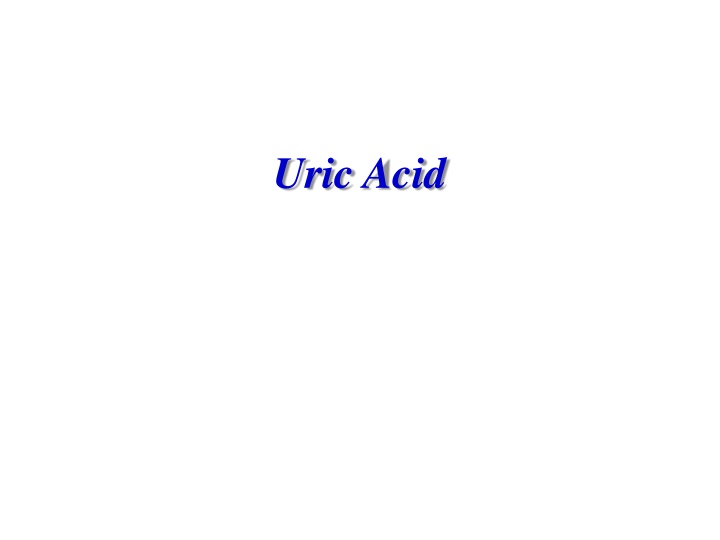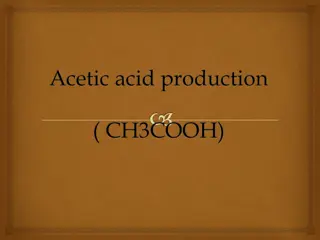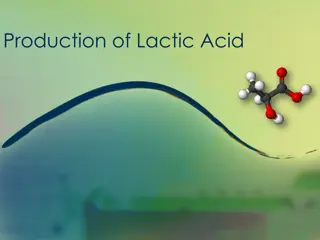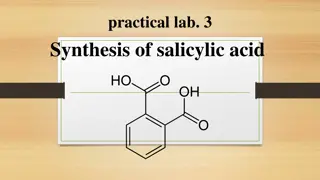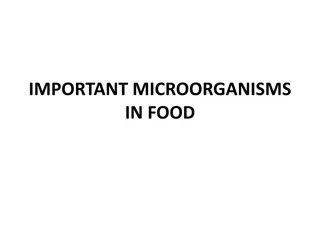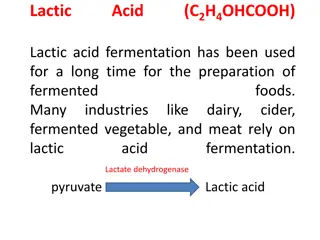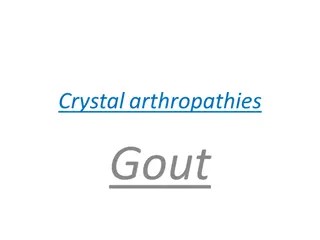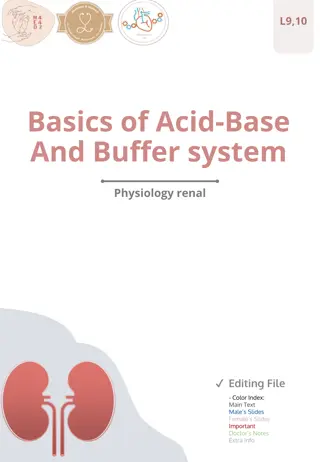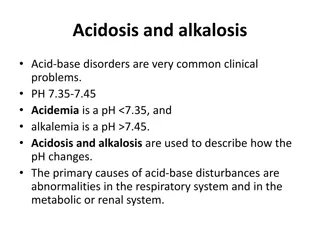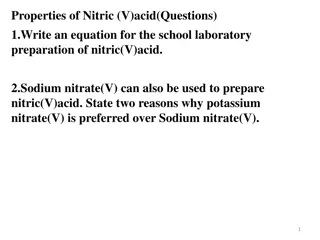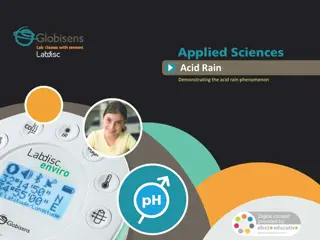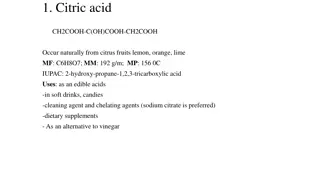Uric Acid
The end product of purine metabolism, forming in the liver and excreted through the kidneys. High levels can lead to conditions like gout, kidney stones, and kidney failure. Uric acid tests help diagnose gout and monitor treatment effectiveness.
Download Presentation

Please find below an Image/Link to download the presentation.
The content on the website is provided AS IS for your information and personal use only. It may not be sold, licensed, or shared on other websites without obtaining consent from the author.If you encounter any issues during the download, it is possible that the publisher has removed the file from their server.
You are allowed to download the files provided on this website for personal or commercial use, subject to the condition that they are used lawfully. All files are the property of their respective owners.
The content on the website is provided AS IS for your information and personal use only. It may not be sold, licensed, or shared on other websites without obtaining consent from the author.
E N D
Presentation Transcript
What is uric acid? It is the end product of metabolism of purines which are present in nucleic acids of nucleoproteins It is formed endogenously exogenously from from nucleoproteins metabolism of purines taken in food and
It is formed in liver and filtered by kidneys to be excreted in urine with little amount passes in stool. High uric acid levels in blood occur when its formation is too much or its excretion is low
What can high uric acid level in blood lead to? It will form solid crystals within joints which is painful and called gout if remain untreated it will lead to hard lumpy deposits called tophi It can also cause kidney stones or kidney failure
Why is uric acid test done? Help diagnose gout Check for kidney stones Check if medicines are working Check for uric acid level in patients on chemotherapy or radiation
Reference values: Child : 2 - 5.5 mg/dl Men : 3.5 - 7.2 mg/dl Women : 2.6 - 6 mg/dl
High values: Individual differences Kidney disease Cancers (leukemia, lymphoma, multiple myeloma) or its treatments Hemolytic anemia, sickle cell anemia, heart failure Alcohol dependence, preeclampsia, obesity
Starvation, malnutrition, lead poisoning Lesch-Nyhan syndrome Medicines (diuretics, vit.c, niacin, warfarin) Foods
Low values: Sever liver disease, Wilson s disease Syndrome of inappropriate ADH Diet low in proteins Large dose of aspirin, allopurinol
